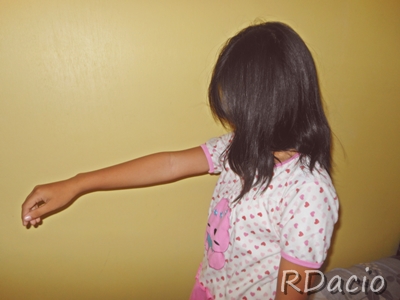While it’s an unnerving to encounter your child sleepwalking, and can seem unusual and strange, sleepwalking is actually quite common in children. Most kids grow out of it by their early teens, but there are some basic steps you can take now to help deal with a sleepwalking child.
While sleepwalking doesn’t usually have an adverse impact on a child’s health, it can be hazardous to youngsters, so it’s important to try employing these measures to help mitigate any risks to your child and encourage a night of safe, sound sleep.

Make the Room Safe
To ensure the risk of injury or damage to your child or his/her surroundings are minimised you should try to make sure the bedroom is safe and free of potential hazards before bed.
For sleepwalkers it is best to avoid sleeping in loft beds or the top of a bunk bed, to avoid any falls. You should also ensure that the floor is free of clutter and there’s nothing left out that’s likely to cause a trip or fall. If space is any issue, consider investing in lo line bunks as they aren’t quite so high and are unlikely to cause your child any harm if they get out of bed in the dark.
Dangerous or sharp objects should be stored out of reach and any breakables should be removed or secured somehow, to avoid breakages if your child does sleepwalk. It may even be worth securing some furniture to the wall if it’s possible that a sleepwalking child may try to climb onto it, like bookshelves or a TV stand.
Prevent an Exit
Make sure the windows are locked or you have safety screens fitted. You should also make sure any doors to outside are kept locked and you may need to consider installing safety locks if your child has a habit of venturing out of the house while sleepwalking. Needless to say, this can be very dangerous.
You can also install safety gates outside your child’s bedroom door or at the tops of stairs, as a precaution that may help avoid roaming.
During Sleepwalking
It can be frightening and confusing for your child to be awoken while sleepwalking and this can cause a shock and an unnecessary disruption to the sleep cycle. For these reasons it is recommended to simply guide your child back to bed gently if you encounter him/her during a sleepwalk, without waking him/her.
Preventative Steps
Often sleepwalking can be caused or exacerbated by a disrupted or irregular sleep schedule, or by fatigue or lack of sleep, so it’s important that you implement a regular bedtime and sleep routine for your child, which includes a regular wake-up time.
Another way to avoid fatigue is simply to make your child’s bedtime a little earlier – if your child is not excessively sleepy when he/she goes to bed it may help to prevent the sleepwalking behaviour.
Avoid caffeinated drinks before bed and try to limit the amount of liquids consumed before lights out. Encourage your child to go to the toilet before bed too, as a full bladder may contribute to sleepwalking.
You should also make sure your child’s room is a safe, cool, quiet place to sleep with as few disruptions or distractions as possible, to ensure a solid night’s sleep, free of interruption.
These are simple steps to take and in most cases these are all you need to do to simply encourage sound sleep and deal with the occasional sleepwalking instance. If sleepwalking persists into the late teens you may wish to consult a doctor to make sure there are no health issues either causing the sleepwalking or being caused by it, but for the most part sleepwalking is a fairly common phenomenon that will pass in time. Until then, simply support your child, create a safe environment, and never underestimate the power of a sound night’s sleep.
– Written by Katie Jones